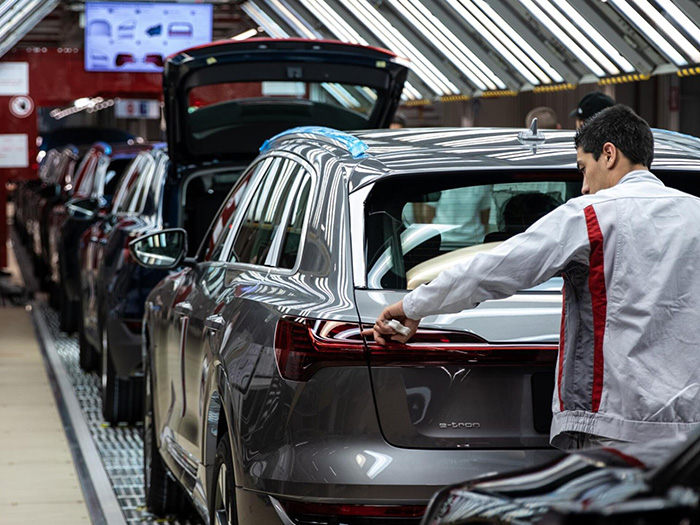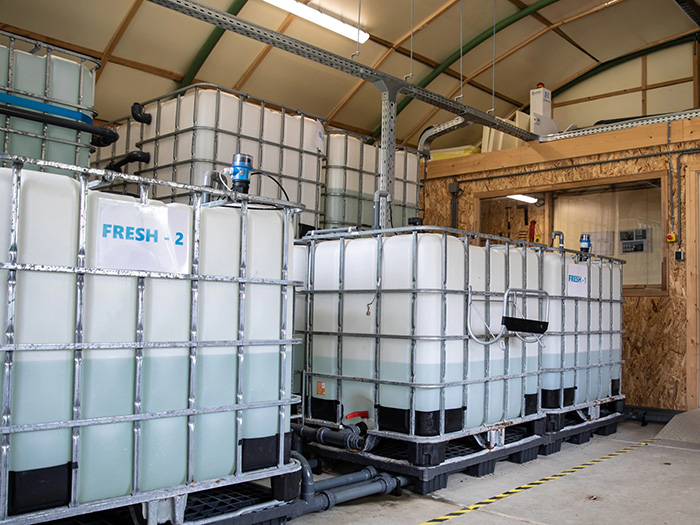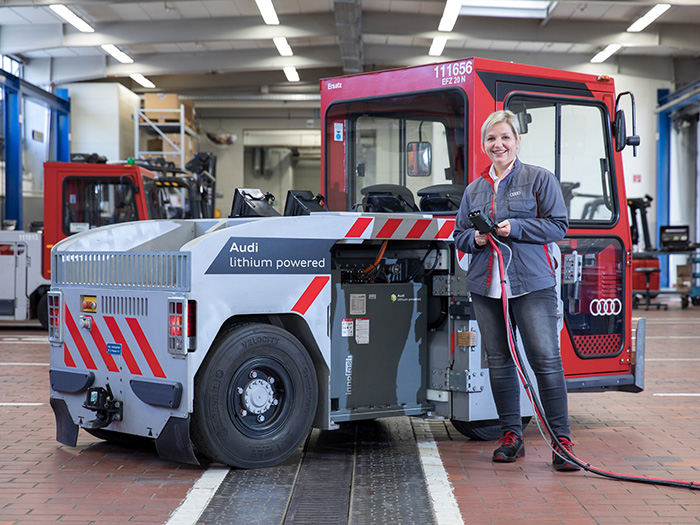Fully sustainable batteries: a challenge to overcome
Batteries could finally end our dependence on fossil fuels, but they can have a hidden environmental cost. The challenge is finding ways of making batteries as clean as the energy stored inside them.
The original content was created by and appears on nationalgeographic.com as part of the AUDI AG brand partnership with National Geographic.
Copyright: National Geographic; Original text: Charlotte Duck; Photos: Harry Woulds, AUDI AG, Unsplash
Energy storage technology in batteries has come on in leaps and bounds in recent years, and the same is true of electricity production from renewable sources. The next step to truly making the transition to an electric future will be making batteries genuinely sustainable – an issue the scientific community is already working on. Lithium batteries are currently the go-to energy storage solution, and are used by the automotive industry, the IT industry and in consumer electronics. They’re efficient chargers and have a higher energy density than alkaline batteries.
Lithium
Dubbed ‘white gold’ by investors, demand for lithium saw its price double between 2016 and 2018. There are 39 million metric tonnes of it on Earth, but only a third is in a form that can be mined; of that, 87 per cent is found in brine waters, mostly in South America’s so-called ‘Lithium Triangle’.
The production process for lithium carbonate involves drilling holes in salt flats and pumping mineral-rich brine to the surface. This brine is left to evaporate, and the resulting salts are filtered to extract the lithium carbonate. Although the process is very simple, it uses large amounts of water and takes between 18 and 24 months.
Audi's commitment

Audi are among those companies looking for ways to make lithium battery production speedier and more climate-friendly.
For instance, valuable elements can be extracted and reused at the end of a battery’s lifecycle; in some cases it’s possible that entire lithium batteries can be repurposed for a second-use, for example as energy storage units or for powering transport and factory vehicles.
Recycling of decommissioned batteries is a major focus for Audi.
Energy density
There’s also scope to increase the energy density from lithium batteries – therefore decreasing their size, and how much lithium is actually required – while also reducing the use of rare and expensive components like cobalt.
Tsuyoshi Hoshino of Japan Atomic Energy Agency’s Rokkasho Fusion Institute has proposed another innovative solution – a method for recovering lithium from seawater using dialysis. The system uses a special membrane which only the lithium ion can pass through. Though not yet ready to be commercialized, Hoshino says his osmosis technique “shows good energy efficiency and is easily scalable.”
Graphene
Graphene supercapacitors are an alternative solution. Instead of holding electricity as chemical potential – like alkaline or lithium batteries – supercapacitors store it in an electric field, similar to the way static collects on the surface of a balloon. The addition of graphene creates supercapacitors that are strong and light.
Although it’s still early days, the graphene battery market is predicted to reach $115 million by 2022. However, there are limits. Supercapacitors are still not able to hold a charge for long and can suddenly run out of power.
Blue Battery

The Blue Battery was developed in Delft, Holland by AquaBattery. It stores power in water and could be used to stockpile all the eco-electricity the Netherlands produces, in a 100 per cent sustainable way.
Passing an electric current through salt water splits it into concentrated saline and freshwater – a process known as electrodialysis – storing the energy at the same time. During the second discharging phase, the process is reversed and the two waters are combined, releasing the collected energy which is then converted back into electric current with the help of special membrane stacks.
It’s a simple, safe technique that has the potential to store huge quantities of electricity for use when needed, making sure a city’s power grid always has enough energy to meet demand, for instance. AquaBattery director David Vermaas wants to roll out the Blue Battery to places where saltwater and freshwater meet, like the Dutch waterways, where the energy potential is enormous.
Blue Batteries will not be installed on cars, but in the next decade or so they could offer a real alternative and support recharging networks with renewable energy. Whether it’s in generation, storage, or the powering of an electric vehicle, the ultimate objective is for every stage in the energy journey to be 100 per cent green.
Recycling

Ever since it began to develop its first fully electric car, Audi has been very focused on the issue of recycling. A recently conducted test showed that more than 90% of the cobalt and nickel present in the Audi e-tron’s high-voltage batteries can be recovered and recycled for use in new battery cells – a solution that saves both precious resources and CO₂ emissions.
In addition, Audi is involved with other partners in various initiatives focusing on human rights and environmental legislation in the supply chain. Audi is also a member of the Global Battery Alliance, which is committed to the protection of human rights in the extraction of raw materials for batteries and identifying solutions for recycling lithium-ion batteries.
Source: AUDI AG
